Cyclamen is a tuberous perennial from the Mirsinovy family, characterized by a long flowering period even in the cold season, when bright colors of summer are so lacking. To get beautiful flowers and maintain decorativeness for a long time, you need to learn how to care for cyclamen correctly.
Material Content:
Types and varieties of plants
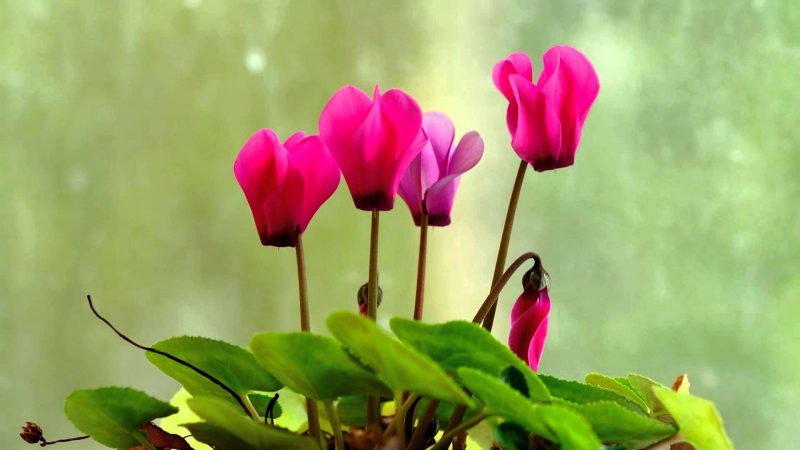
About 20 species of the genus grow in the natural habitat, however, as a rule, two species are cultivated in indoor floriculture, on the basis of which many varieties are bred:
- European cyclamen - a species also known as alpine violet, is distinguished by small leaf plates, fragrant flowers of pink and lilac colors on towering peduncles and a good tolerance of the apartment environment. Flowering with proper care can last from spring to late autumn. There are many varieties with white, carmine and other colors of inflorescences.
- Persian cyclamen - thanks to the bewitching beauty of pink, purple and white flowers, the species has gained wide popularity in indoor floriculture. Moreover, rather large leaf plates are not inferior to inflorescences in decorativeness. The flowering period is observed from autumn to spring, after which there comes a long period of dormancy, in which exotic plants completely discard foliage.Currently, dwarf varieties of Persian cyclamen have become more preferable in comparison with tall ones due to better tolerance of room temperatures - Pink, Victoria, Spring Moth, Striat.
Cyclamen care after purchase
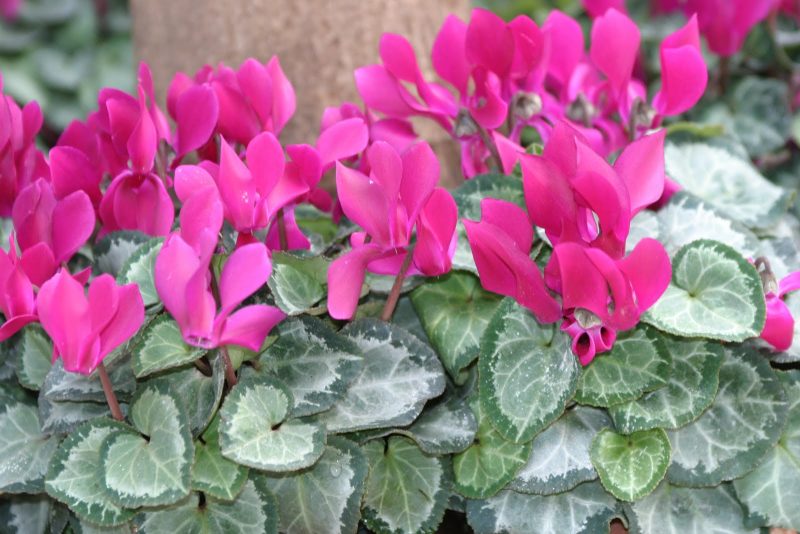
After the flower appears in the house, it is necessary to quarantine it, isolating it from contact with other indoor crops. The duration of the quarantine regime, in which cyclamen is systematically examined for pests or pathogens, should be at least 20 days. If signs of insects or diseases are detected, a pesticidal solution is treated. During acclimatization, which takes place during quarantine, the flower experiences stress, therefore it is recommended to transplant only after its completion.
Attention! If buds are formed on the plant or flowers bloom, then transplantation is not carried out.
How to care for cyclamen flower at home?
The representative of the exotic flora has a rather capricious character and needs a systematic and comprehensive care.
Lighting and location
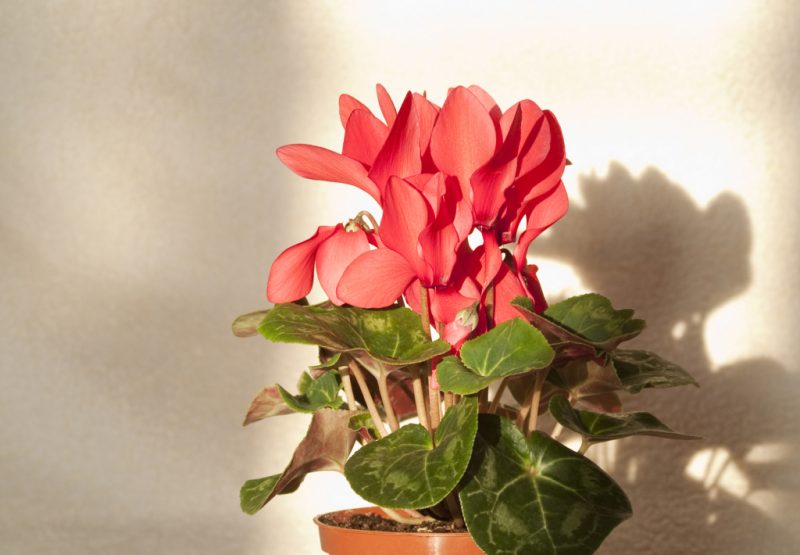
The photophilous plant feels comfortable on the windowsills of the east or west windows, of which enough soft light falls on it. During the summer heat, it is recommended to take the flower out onto the street or a balcony with protection from direct rays. In the absence of such an opportunity, a systematic ventilation of the premises should be organized.
Soil requirements
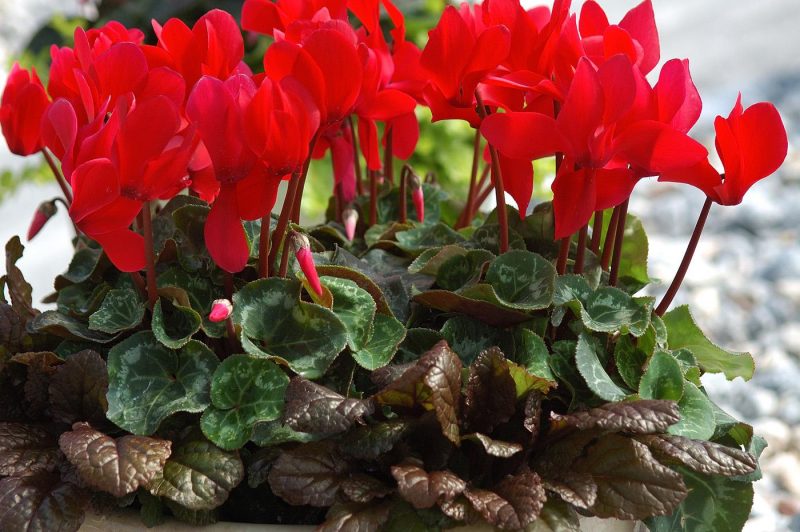
Exotic plants need to choose light soil with a loose structure. A ready-made substrate for cacti is perfect. If the grower wants to independently compose a soil mixture, then it is enough to take one part of the turf soil, peat and sand.
Temperature
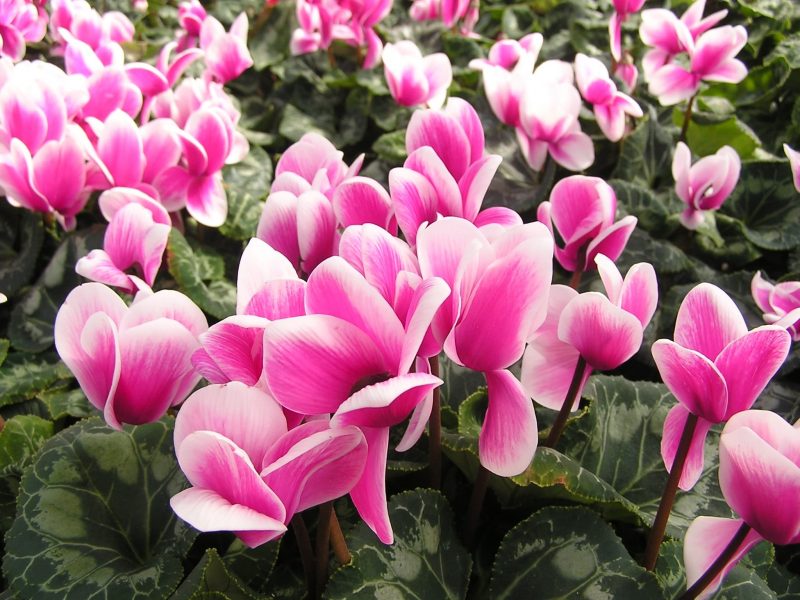
For abundant and prolonged flowering, cyclamen needs coolness within 6-15 ° C throughout the year. Therefore, the most spectacular are the types and forms, the flowering phase of which is observed in the autumn-winter period.
Fertilizers for flower
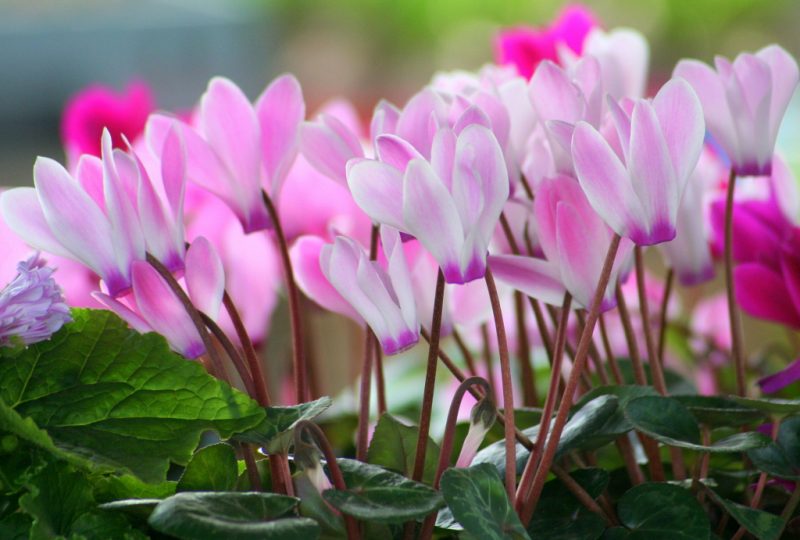
The plant is fed only with intensive growth with a time interval of 15 days. The composition of fertilizing includes liquid mineral fertilizers for flowering crops.
Caution! Cyclamen is intolerant of the high concentration of mineral salts in the substrate.
Watering cyclamen
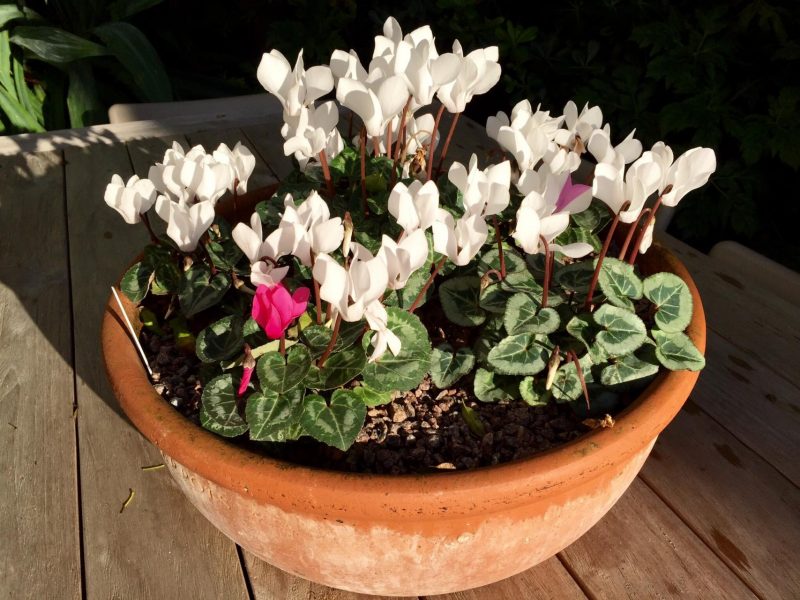
Cyclamen loves moisture. However, between waterings, the top layer of the substrate should have time to dry out. The best option, which will exclude the possibility of water entering the growth point and the onset of the development of fungal diseases, is the lower watering system. With this method of moisturizing, the pot is installed in a tray with water, and the flower draws as much water as it really needs.
Read also:indoor fern
Air humidity

To ensure the increased level of importance that cyclamen really needs, it is necessary to systematically spray the culture.
Important! During the summer heat, spraying can lower the air temperature by several degrees.
Care after flowering
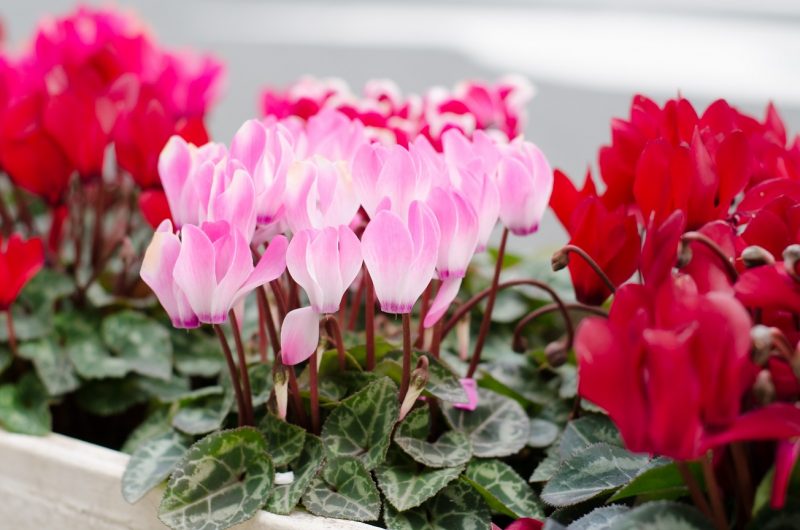
When the flowering is completed, the leaves naturally begin to turn yellow in the plant, which should be twisted so that they themselves are separated from the tuber-bulb. Then the container with the flower moves to a shaded place with cool temperatures, where it remains until it leaves its dormant state. In the stagnation stage, watering is reduced to a minimum.
Transplant at home
Cyclamen replanted annually after waking up.
At that time:
- A rather close pot is selected in which the soil layer between the bulb and the wall will not exceed 3 cm.
- A drainage layer of any material suitable for this purpose is placed at the bottom of the tank - gravel, expanded clay, broken brick.
- Drainage is lightly sprinkled with a loose substrate, onto which the bulb with an old lump is transferred.
- The remaining space is filled with the soil mixture so that a third of the bulb is on the surface.
- Fresh substrate is compacted and moistened.
More materials:cyclamen at home
Pest and Disease Control
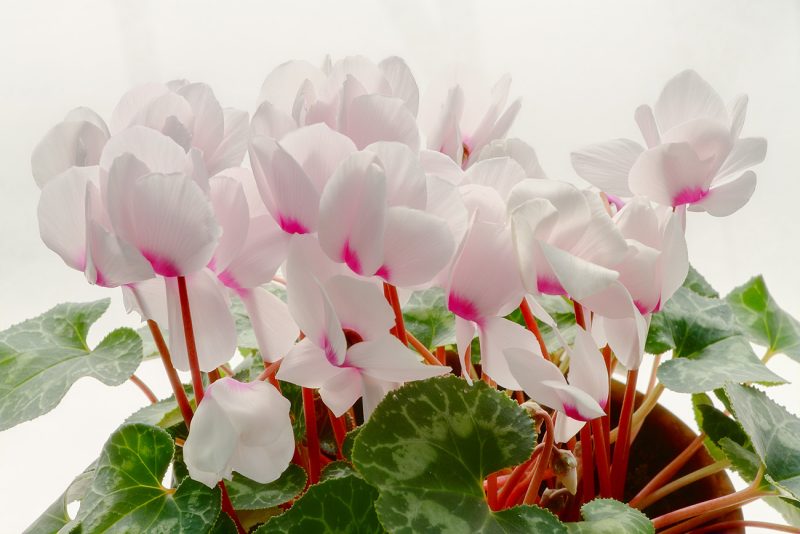
Among the most dangerous pests that attack the culture, a cyclamen tick stands out. In case of signs of its vital activity, the plant is subject to immediate treatment with an insecticidal preparation, which can be repeated after 10 days with a strong degree of settlement. In violation of the rules of maintenance, arachnoid flare and aphids are also noted, which also is a carrier of sooty fungus. Diseases in the form of rot develop only in the case of systematic waterlogging of the soil. When harmful organisms are detected, cyclamen is sprayed with pesticidal preparations, the spectrum of action of which depends on the object being processed.
The reasons why cyclamen does not bloom leaves turn yellow
Growing cyclamen is often accompanied by a number of difficulties.
Foliage turns yellow

The causes of yellowing of the leaves may be due to the following factors:
- Violation of the irrigation system - in order to prevent the occurrence of a similar problem, the lower irrigation system is used after the top layer of the substrate is dried.
- Stuffiness and high air temperature in the flower keeping room - in order to eliminate the negative consequences of air drought, it is necessary to organize systematic ventilation and spraying of cyclamen.
- Preparation for the stagnation stage is the stage after flowering is completed, during which foliage is discarded.
Cyclamen does not bloom
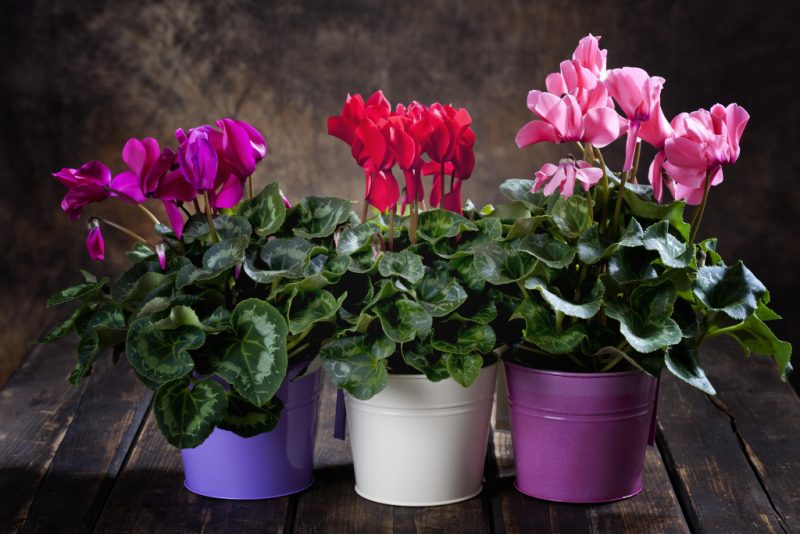
Among the reasons for the lack of flowers, stand out:
- moisture deficit both in air and in the substrate;
- high temperature in a room intended for growing cyclamen.
Thus, despite the demanding culture, providing all conditions for maintenance and care guarantees the grower bright colors throughout the winter.












